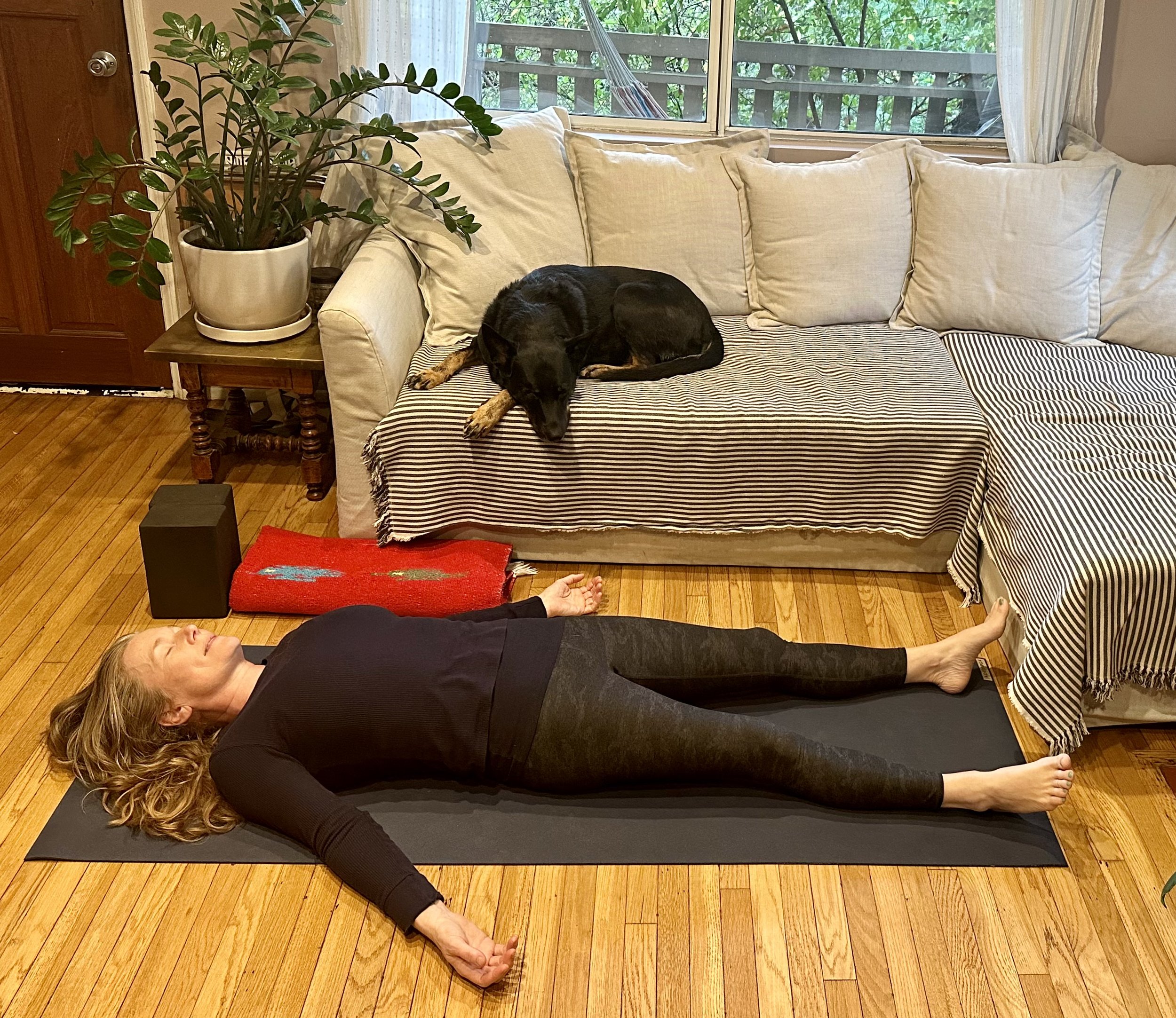Come for the yoga. Stay for the relaxation!
You made it through class, and the time has finally come to lie down and relax. “Find your way into a comfortable position,” your yoga teacher coos at you with misty eyes. “Lovely idea,” you mutter, as you roll up your yoga mat with slightly pursed lips. “Too many things to do, I’m afraid!” In our busy lives, lying down at the end of class can seem like a frivolous waste of time.
So why is it so important to stay for the relaxation?
The practice of relaxation in yoga is called “savasana”, or “corpse pose”. On a basic level, you lie down on your back and your body becomes so relaxed that you appear lifeless. In comparison to other poses you may have wrestled with in class, it’s tempting to assume that corpse pose is the easiest yoga pose of all, if not an optional extra. Admittedly, the lying down on your back part is, for most of us, a teddy bear’s picnic. But it’s the work that we do once we are lying down that makes this pose so important and much more advanced than you might think.
Unlike sleep, true relaxation is a conscious act. It requires effort. Just because you are lying down on the floor doesn’t necessarily mean that you are fully relaxed. On the contrary, all kinds of things can happen once you are horizontal. After the initial joy of being spread-eagled wears off, many of us experience feelings of restlessness. We start to worry and chase random thoughts, or we get bored, maybe even irritated. Sometimes, in the act of trying to let go, we shut down altogether and start snoring. Whether it is agitation or sleepiness, these reactions are a natural resistance to the deceptively challenging task at hand - letting go while remaining awake.
The practice of savasana can be looked at in three stages.
The first stage is physical relaxation. For most of us, this stage is the easiest to attain. Your teacher will guide you through a gentle body scan to help you release tension from your various body parts and encourage you to cultivate a feeling of surrender in your limbs. Your body starts to feel deliciously heavy and you can’t imagine ever wanting to move again.
The second stage is mental relaxation. If you’ve ever tried to relax your mind, you’ll know that this is where the “teddy bear’s picnic” reference no longer applies. Thoughts and emotions seem to spring up out of nowhere, often taking us quite by surprise. As overwhelming as these feelings can seem, this bobbing to the surface is not a negative thing, it is just a natural part of the process of release. Our challenge is to work on gently loosening our grip on these thought waves, watching them come and go, like clouds floating across the sky.
In the third and most advanced stage of relaxation, we let go of everything - mind, body and breath. The breath naturally becomes slow and quiet, almost imperceptible, and we enter a state of complete mental and physical surrender. We are no longer identifying with our mental processes or with the physical body, and we experience pure awareness without attachment.
To put it in more relatable terms, imagine having no restlessness in your body, no pesky thoughts in your mind and feeling completely at ease. It might sound simple enough, but if you’ve ever tried to attain this level of inner peace, you will know that it is an olympic challenge! That is why the ancient yogis considered savasana to be the most advanced pose of all. In fact, they regarded it as divine. If you’ve ever tasted it for yourself, you might agree with them. Call it what you wish, I think we can all agree that feeling deeply relaxed while remaining awake is a profound experience.
The practice of relaxation is not about putting pressure on yourself to nail ‘the ultimate surrender‘. It is about practicing letting go - or "flexing your letting go muscle”, as I like to say - and then being present with whatever happens.
Some days you might twitch your way through the challenges of the first stage. Other days you might experience a magical glimpse of the third. On another day you might snooze and miss the whole thing. It is your willingness to try that counts and, as always, regular practice is key. It is also worth remembering that the three ‘stages’ are just a way of interpreting something which is endlessly fluid and complex.
The speed and chaos of modern life has put so many of us on full time alert and, as a result, our systems are suffering. Deep relaxation is nature’s way of recharging, and we only have to look at our regularly blissed-out pets to see a fine example of this. Us humans, on the other hand, seem to have lost our connection to this fundamental need. We have shunted deep relaxation to the bottom of our to-do lists, and we spend most of our days urgently trying to achieve what we think is important in life. We overlook the fact that, sometimes, the most important thing we can possibly do is take a complete rest.
So next time your yoga teacher coos at you to “settle in” for the final relaxation, give yourself permission to embrace the challenge! Grab a blanket, maybe dab some lavender oil on your wrists, perhaps even get a little misty-eyed, and treat yourself to the gift of becoming a little less attached to the comings and goings of your mind, and a little more in touch with the profound experience of inner peace.
Do yoga. Feel better. It’s that simple!

